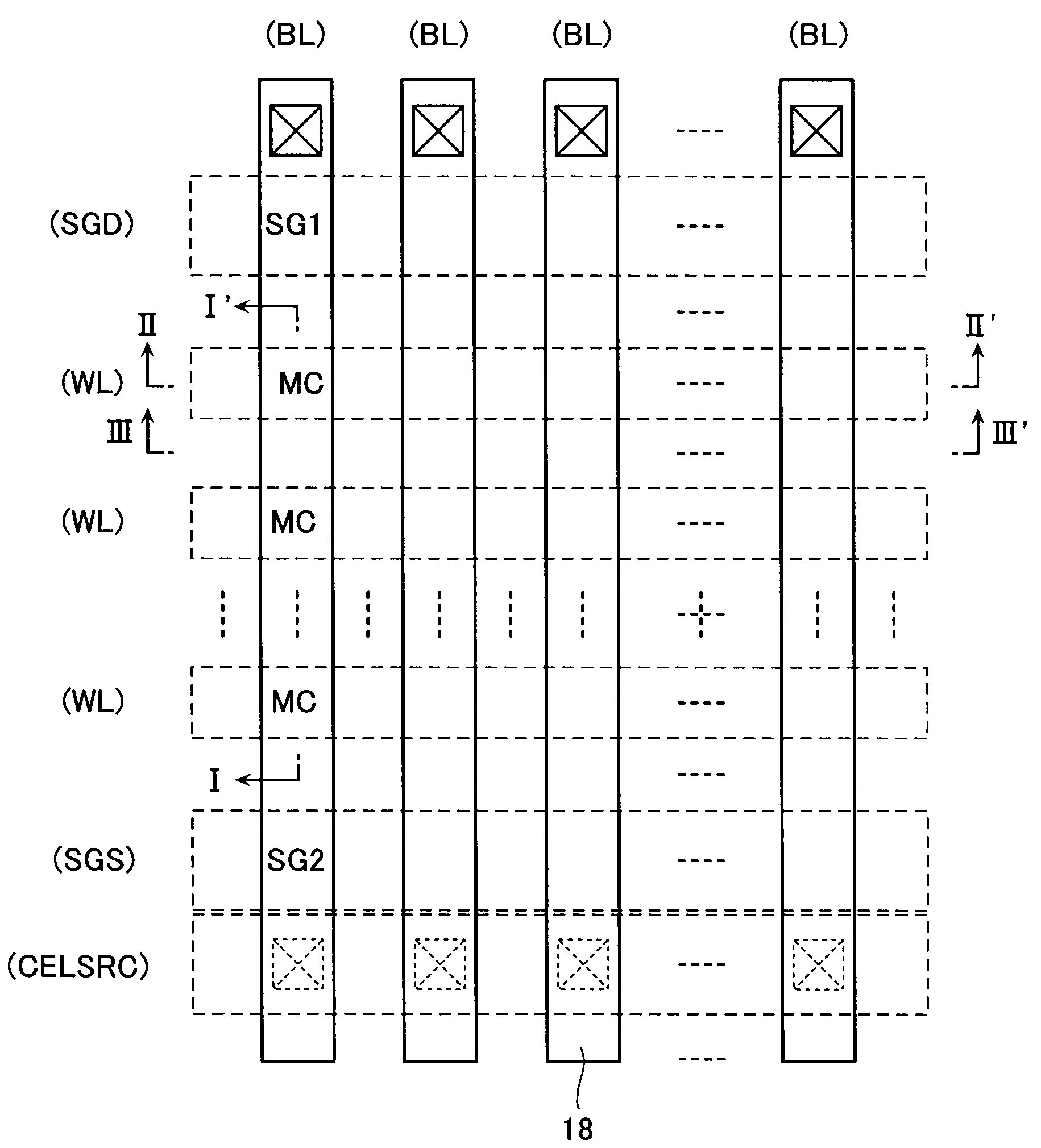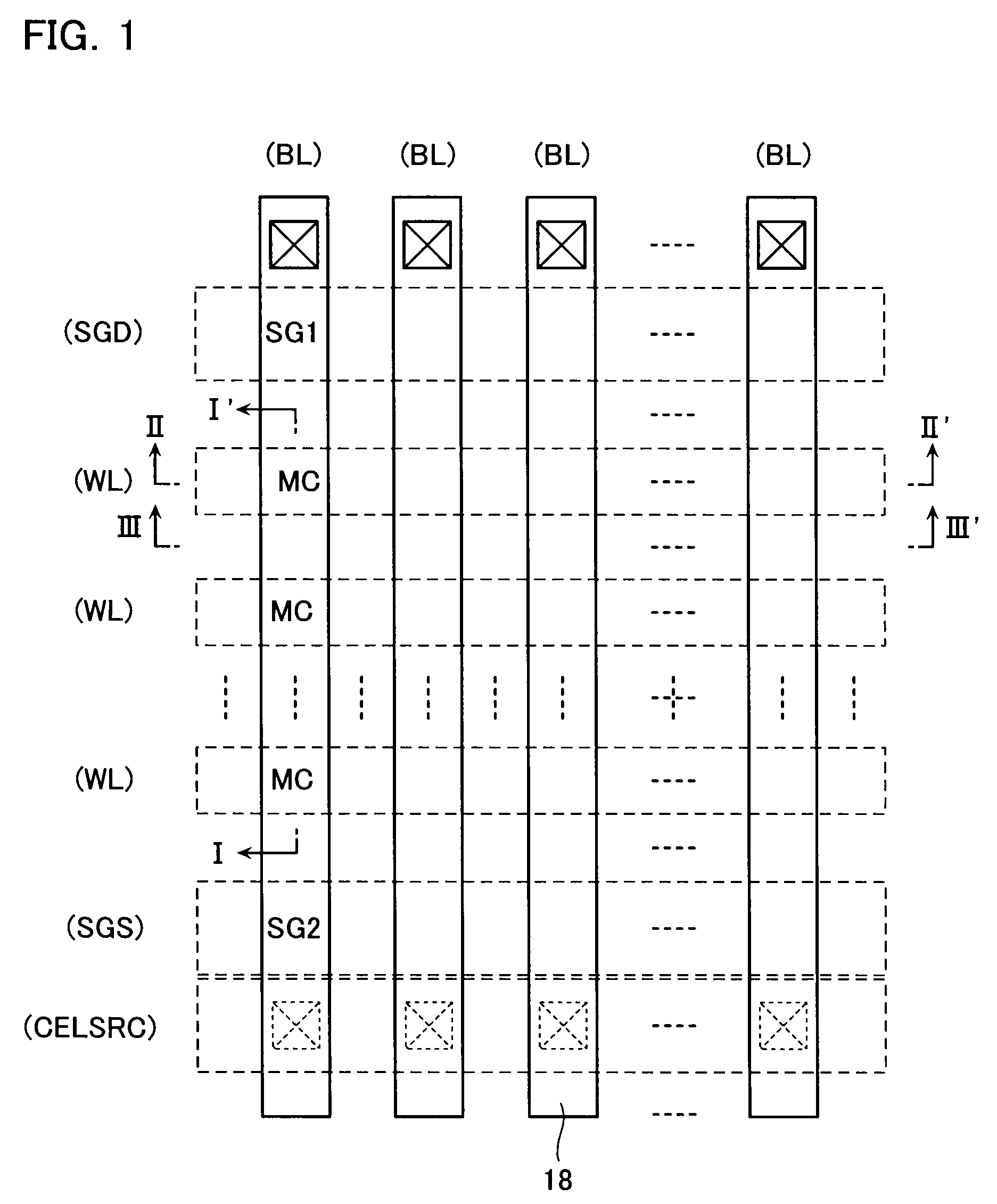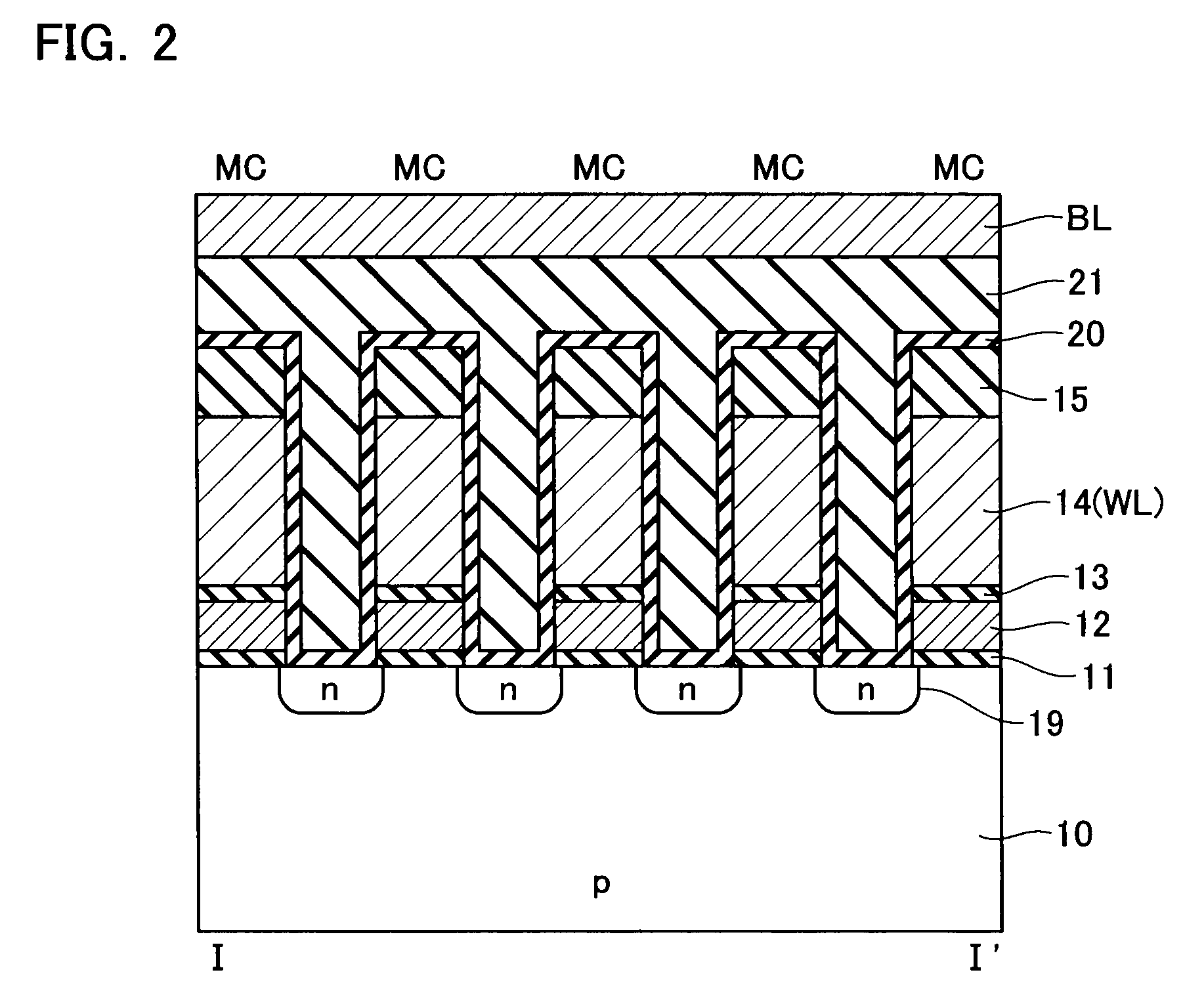Non-volatile semiconductor memory device and method of manufacturing the same
- Summary
- Abstract
- Description
- Claims
- Application Information
AI Technical Summary
Benefits of technology
Problems solved by technology
Method used
Image
Examples
first embodiment
Method of Manufacturing
[0053]With reference to FIGS. 5-24, a method of manufacturing the NAND-type EEPROM according to the above first embodiment is described next.
[0054]First, as shown in FIG. 5, the gate oxide 11 is formed with a thickness of, for example, 10 nm on a memory cell region of the silicon substrate 10. A first polysilicon film 12A to be turned into the floating gate 12 is formed with a thickness of, for example, 100 nm on the gate oxide film 11. Further, a silicon nitride 30 is formed with a thickness of, for example, 50 nm on the first polysilicon film 12A. Then, a resist film 31 is formed on the silicon nitride 30. The resist film 31 is patterned as shown in FIG. 6 to selectively remove the silicon nitride 30, the first polysilicon film 12A, the gate oxide film 11 and an upper layer of the silicon substrate 10 by anisotropic etching to form the element isolation trenches 16.
[0055]Subsequently, as shown in FIG. 7, after removal of the resist film 31, a first buried fi...
second embodiment
Method of Manufacturing
[0073]FIG. 28 is a cross-sectional view of an NAND-type EEPROM according to another embodiment of the present invention taken along the word line WL in a process step.
[0074]In this embodiment, a process of CVD, for example, is applied to form an air-gap creation film 35 composed of a carbon-based material on the element isolation insulating film 17 in place of the air-gap creation film 32 of the polysilazan oxide or the like as shown in FIG. 9. Also in this case, the air-gap creation film 35 is formed over the entire surface. Then, it is polished by CMP with a stopper of the silicon nitride film 30, followed by a process of wet etching or RIE using DHF or the like to recess the air-gap creation film 35 back to a certain thickness.
[0075]The carbon-based air-gap creation film 35 can be removed by O2 ashing. Thus, the air-gap 22 can be formed in the portion where the carbon-based air-gap creation film 35 once existed.
PUM
 Login to View More
Login to View More Abstract
Description
Claims
Application Information
 Login to View More
Login to View More - R&D
- Intellectual Property
- Life Sciences
- Materials
- Tech Scout
- Unparalleled Data Quality
- Higher Quality Content
- 60% Fewer Hallucinations
Browse by: Latest US Patents, China's latest patents, Technical Efficacy Thesaurus, Application Domain, Technology Topic, Popular Technical Reports.
© 2025 PatSnap. All rights reserved.Legal|Privacy policy|Modern Slavery Act Transparency Statement|Sitemap|About US| Contact US: help@patsnap.com



